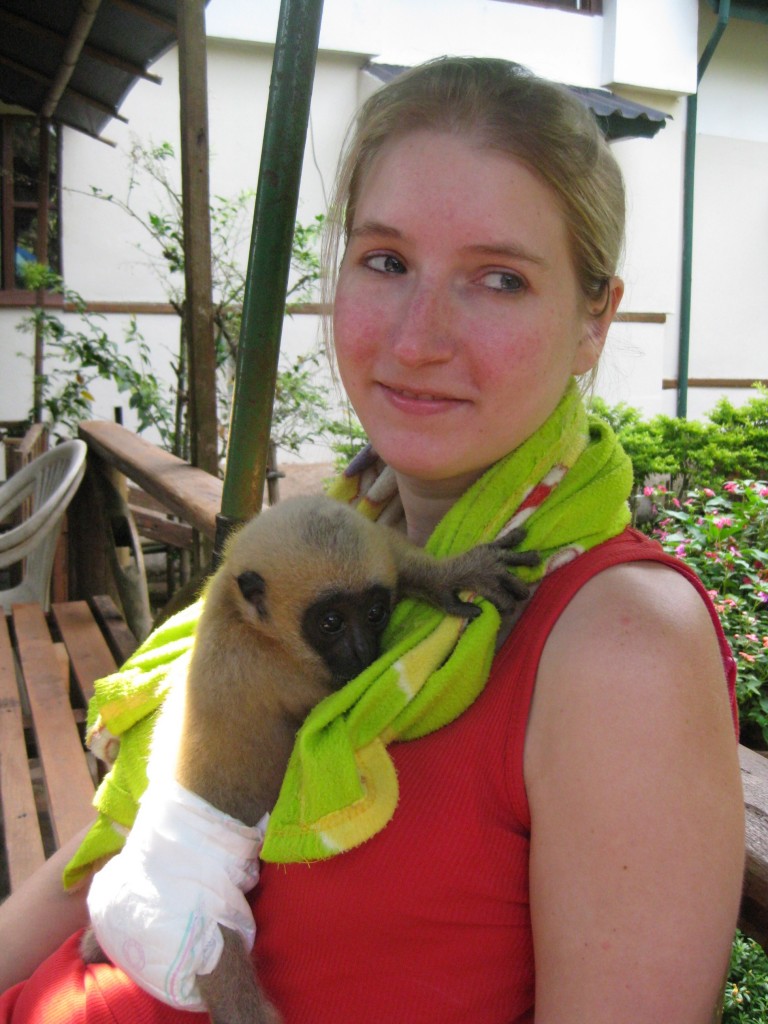Julia Ruppell, now officially Dr. Julia Ruppell, defended her dissertation work on white-cheeked crested gibbons in May. She will be taking about a year to write up the results and get them published but here’s a snap shot of what she was studying.
The endangered white-cheeked crested gibbon (Nomascus leucogenys), native to Laos, Vietnam, and perhaps China, remains little known and highly threatened. Julia Ruppell studied seasonal variation in the diet, activity budget, and ranging behavior of three groups of white-cheeked crested gibbons in Nam Kading National Protected Area, Bolikhamxay Province, Laos, over 12 months.
Crested gibbons (Nomascus spp.) are speculated to be more folivorous than other gibbons, but this has never been confirmed because of the paucity of fieldwork on the genus. Dr. Ruppell studied diet in relation to forest seasonality to determine the contribution of leaves to the diet over an annual cycle. Activity budget is an important aspect of a species’ ecology because it is directly related to home range use, energy investment, and diet, but it has never before been studied in gibbons (Nomascus spp.) of the rainy, mountainous, forests of Laos.
Gibbons and their habitat in Laos have faced continuous threats over the past 10 years because of large scale development projects and subsistence hunting. Given the poor status of the species in Vietnam and China, the Lao population is certainly the world’s largest and the best hope for conservation of behavioral, ecological, and genetic diversity. Resources for conserving species in the country are very limited, and wildlife populations are already widely fragmented. In her paper Julia will describe the current conservation issues and based on the dietary and ranging information that she collected, and recommend important conservation measures to safeguard the remaining populations of endangered gibbons from extinction.
We are very proud of Julia over here at PDXWildlife and all the work she’s accomplished to help the world learn more about these charismatic creatures.


